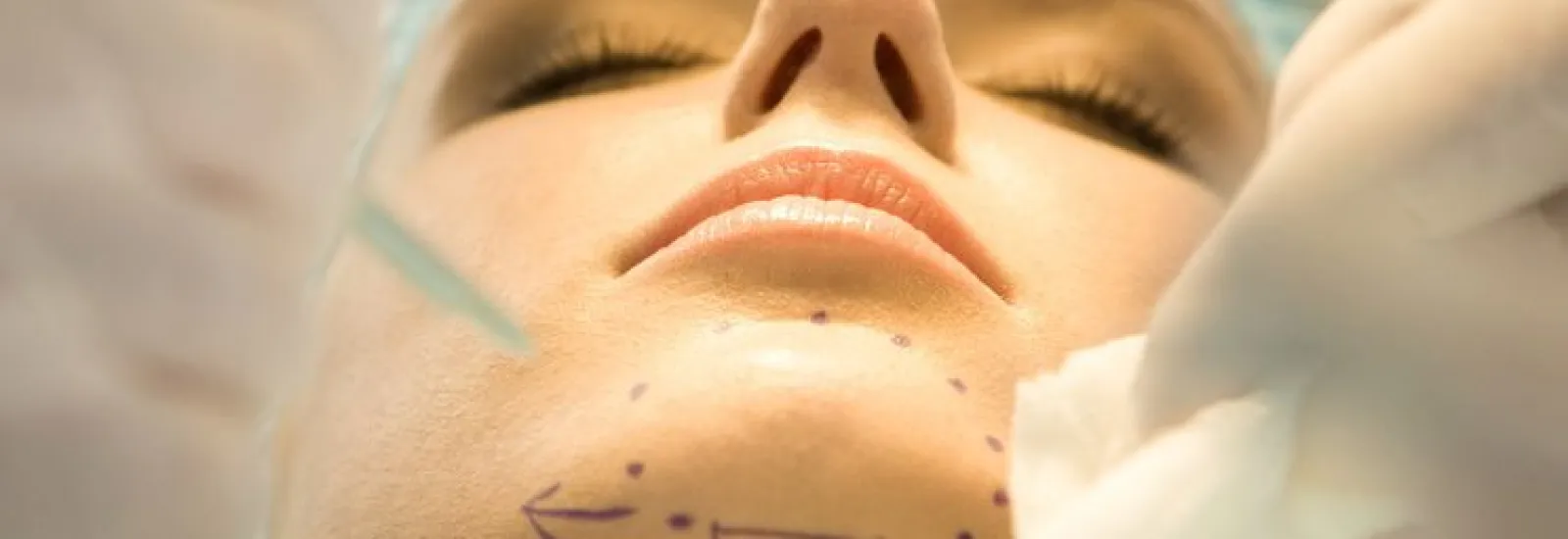
Chin augmentation, or genioplasty, can balance the entire facial profile

Chin augmentation or reduction is referred to as genioplasty. These procedures involve modifications to either increase reduce or change the position/point of the chin. Traditional procedures use a prosthetic implant made of silicone or other material or bony cuts (osseous genioplasty) to change the chin’s appearance. This procedure can be done alone but is also very commonly associated with rhinoplasty (nose surgery) or orthognathic surgery — surgery to change the position of the teeth when orthodontics won’t work or to improve sleep apnea. These surgeries especially when combined have been described as the most powerful plastic surgeries to change one’s appearance. Modern masculine features are defined by a powerful chin (think super-hero) and feminine facial beauty by balancing the curves of the nose and chin to prevent a flat profile.
There are benefits and complications with both methods. Implants are typically considered simple and less painful. Unlike breast implants chin implants can be cut and modified to give a custom fit. There is no “gel” filler so there is no worry of rupture. And movement can be prevented by attaching the implant to the bone if needed. With any implants extrusion (exposure) and infection can be a problem. But these implants are placed deeper than other facial implants so this is less common.
Osseous genioplasty is often considered a more robust type of modification. This surgery is more “powerful” because it uses the patient’s own bone so there is no chance of “implant failure.” This technique requires a special skill-set (precise bone cuts and fixation) and requires more training than just popping in an implant. There may be noticeable bumps at the edges of the cuts but these will smooth out as time goes on because the bone is living tissue that remodels and smooths out continuously.
The three main things that people try to change are when they feel their chin is too large too small or crooked. A large chin is called “macrogenia” and requires some modification of the bone or soft tissues. This is usually done by cutting the tip of the chin and pushing it back or removing some of it. To correct a small chin – or “microgenia” – involves placement of an implant or cutting the bones and moving things forward. An asymmetrical or crooked chin will either involve placement of an implant to simulate the midline chin or by cutting the bones and shifting to the correct position.
Satisfaction rates are very high with genioplasty and complications tend to be uncommon. A common complication is putting too large of an implant in a woman. Other complications can include injury to the nerves as they come out of the chin. This can cause numbness to the lower lip and chin. A “witch’s chin” can occur if the soft tissues and muscles are not properly suspended when performing the surgery. Infections are uncommon despite using incisions within the mouth to hide scars.
If you are interested in improving the appearance of your chin make sure you know all the options available to you. Chin surgery complements other operations such as rhinoplasty facelift and necklift. It is important to know if your plastic surgeon is board-certified by the American Board of Plastic Surgery and has the proper training. If you’d like to setup a consultation please call (765) 962-4872.

